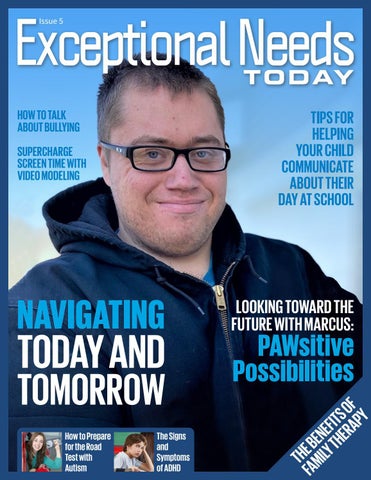
Strategies for teaching students with adhd involve creating structured environments and providing clear instructions. These strategies aim to support attention and focus and help students manage their impulsivity and hyperactivity.
Students with adhd often benefit from visual aids and hands-on activities, as well as frequent breaks and built-in movement opportunities during lessons. Differentiation and individualization are essential in catering to each student’s unique needs, and maintaining consistent routines and expectations can also be beneficial for their success.
Establishing effective communication and collaboration with parents and other professionals involved in the student’s care is crucial for ensuring a supportive and consistent learning environment. By implementing these strategies, educators can help students with adhd thrive academically and socially.

Credit: drjockers.com
Understanding Adhd In Students
Understanding adhd in students: adhd, or attention deficit hyperactivity disorder, is a neurodevelopmental condition that affects a student’s ability to concentrate and control impulsive behavior. This has a significant impact on their learning experience. Students with adhd face common challenges such as difficulty staying focused, following instructions, and organizing tasks.
However, it is crucial to recognize their unique strengths as well. Students with adhd can be highly creative, energetic, and think outside the box. As educators, it is important to implement strategies that cater to their specific needs, providing structure, clear expectations, and frequent breaks.
Incorporating visual aids, hands-on activities, and incorporating their interests into lessons can enhance their engagement and learning outcomes. By understanding adhd and utilizing effective strategies, educators can create a positive and inclusive learning environment for all students.
Creating A Supportive Learning Environment
Creating a supportive learning environment is crucial for teaching students with adhd. Structuring the classroom in a way that assists these students is essential. Visual aids and schedules can be implemented to help students with adhd focus better. By providing clear and organized visual cues, students can stay on track and follow the lesson more effectively.
Additionally, the use of assistive technologies can greatly aid in learning. These tools can provide personalized support, such as interactive programs or apps, that cater to individual learning styles. By incorporating these strategies, teachers can create an inclusive environment that supports the unique needs of students with adhd.
Effective Teaching Strategies For Students With Adhd
Effective teaching strategies for students with adhd involve breaking down lessons into smaller tasks, engaging students through hands-on activities, and incorporating movement and physical activity. By offering smaller, manageable tasks, students with adhd can better focus and retain information. Hands-on activities help them stay engaged and actively participate in the learning process.
Additionally, providing opportunities for movement and physical activity can help students with adhd release excess energy and improve their ability to concentrate. These strategies create a more inclusive and supportive learning environment for students with adhd, enhancing their overall educational experience.
With these strategies in place, educators can effectively cater to the unique needs of students with adhd, enabling them to thrive academically and reach their full potential.
Utilizing Differentiation And Personalization
Strategies for teaching students with adhd focus on utilizing differentiation and personalization. Tailoring instruction to accommodate individual learning styles is essential. This involves implementing accommodations and modifications to meet the unique needs of students with adhd. By doing so, educators can create a supportive and inclusive learning environment.
Collaboration with parents and support staff is crucial for student success. Working together allows for the exchange of valuable insights and ensures consistency in the strategies used both at school and at home. Through these strategies, teachers can help students with adhd thrive academically and reach their full potential.
By recognizing and addressing their individual learning styles, students with adhd can engage effectively with the curriculum and achieve successful outcomes.
Promoting Organization And Study Skills
Strategies for teaching students with adhd include promoting organization and study skills, as well as teaching effective time management techniques. By introducing strategies for organizing materials and assignments, students can develop a sense of structure and minimize distractions. Cultivating effective study habits is essential in helping students with adhd stay focused and retain information.
Providing them with tools and techniques to manage their time effectively ensures that they can prioritize tasks and meet deadlines. Encouraging the use of planners or digital calendars, breaking tasks into smaller steps, and creating a consistent routine all contribute to improved organization and productivity.
Additionally, teaching strategies such as chunking information, providing visual aids, and incorporating interactive activities can enhance engagement and retention of material. By implementing these strategies, educators can empower students with adhd to succeed academically and overcome challenges they may face in their learning journey.
Managing Behavior And Maintaining Engagement
Teaching students with adhd requires effective strategies for managing behavior and maintaining engagement in the classroom. Implementing positive behavior management techniques is essential to create a supportive learning environment. By utilizing effective communication techniques, educators can foster a positive relationship with students and better understand their individual needs.
This includes providing clear instructions and consistent feedback to help students stay on task. Encouraging active participation and engagement is also crucial. Teachers can use various strategies such as incorporating hands-on activities, group discussions, and visual aids to enhance learning experiences for students with adhd.
Additionally, allowing students to take frequent breaks and providing opportunities for movement can help improve focus and reduce restlessness. By implementing these strategies, educators can create a supportive and engaging learning environment that benefits all students, including those with adhd.
Enhancing Social Skills And Peer Interaction
Teachers can enhance social skills and improve peer interaction among students with adhd. Implementing social skills training and support is crucial. By creating a positive classroom environment that encourages collaboration, students can feel more included. Teachers should also promote peer interaction to foster relationships and teamwork.
Additionally, engaging students with adhd in group activities can help them develop social skills and learn from their peers. By implementing strategies like cooperative learning and teamwork, teachers can create inclusive classroom environments that benefit all students. Encouraging students to work together can enhance their social skills and improve their overall learning experience.
A supportive and inclusive classroom environment is essential for the success of students with adhd.
Collaboration With External Professionals
When teaching students with adhd, recognizing the need for external support and collaboration is crucial. This involves communicating and working closely with healthcare professionals who can provide valuable insights and guidance. By building partnerships with community organizations, educators can tap into additional resources and support networks.
These collaborations can help create a more inclusive and effective learning environment for students with adhd. Through sharing knowledge, accessing specialized training, and leveraging external expertise, teachers can better meet the unique needs of these students. This collaboration also fosters a holistic approach to education, ensuring that students receive the necessary support and interventions both inside and outside the classroom.
By actively seeking external professionals’ input and engaging with community organizations, educators can implement effective strategies that address the diverse challenges faced by students with adhd.
Assessment And Evaluation Strategies
Assessment and evaluation strategies play a crucial role in teaching students with adhd. Alternative assessment methods are effective in catering to their unique learning needs. Adapting test formats to accommodate their challenges is essential. This can be achieved by providing additional time or modifying the questions to be more adhd-friendly.
Timely and constructive feedback is equally important in their academic journey. It helps them understand their strengths and weaknesses, allowing for targeted improvements. Feedback should focus on celebrating their achievements and guiding them toward areas that need further development. By implementing these strategies, educators can create a supportive learning environment for students with adhd, enabling them to thrive academically while addressing their specific needs.
Supporting Transitional Periods
Supporting students with adhd during transitional periods, such as grade level changes, can be challenging yet crucial. Understanding each student’s unique needs and providing appropriate assistance is paramount. Assisting them in preparing for exams, standardized tests, and college applications is essential to alleviate their anxiety.
Offering guidance and support during transitions to post-secondary education or the workforce can help them successfully navigate these significant changes. Encouraging open communication, providing organizational strategies, and establishing consistent routines are beneficial approaches. Offering extra time for assignments, breaking down tasks into manageable steps, and providing visual aids can also aid their comprehension.
By implementing effective strategies and fostering a supportive environment, educators can empower students with adhd to thrive during transitional periods.
Conclusion And Reinforcement Of Strategies
When it comes to teaching students with adhd, it is essential to reinforce the strategies that have been discussed throughout this blog post. Summarizing the key strategies for teaching students with adhd helps to solidify learning outcomes. By reinforcing the importance of a supportive learning environment, educators can create a space where students with adhd feel understood and valued.
Empowering educators to make a positive impact on students with adhd is crucial, as they play a vital role in fostering academic success and overall well-being. By implementing these strategies consistently, educators can help students with adhd thrive and reach their full potential.
With a supportive environment and the right strategies in place, students with adhd can excel academically and develop essential life skills for their future success.
Conclusion
Teaching students with adhd requires a combination of patience, understanding, and effective strategies. By implementing the strategies discussed in this blog post, educators can create a supportive learning environment that caters to the unique needs of these students. Using visual aids, such as graphic organizers and charts, helps to enhance organization and comprehension.
Incorporating movement breaks and hands-on activities not only increases engagement but also provides an outlet for excess energy. Breaking tasks into smaller, more manageable parts and providing clear instructions can prevent overwhelm and facilitate better focus. Additionally, establishing consistent routines and utilizing positive reinforcement can promote self-regulation and motivation.
Remember, every student with adhd is unique, so it’s important to assess individual needs and adapt strategies accordingly. By implementing these strategies, teachers can empower students with adhd to reach their full potential and excel academically and socially.









